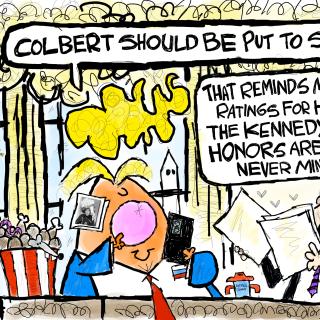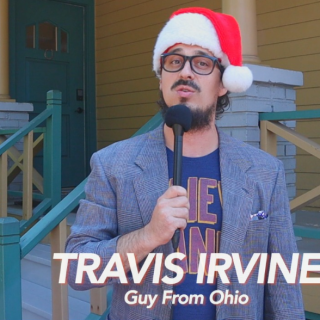Advertisement
Nineteen-sixty-eight was the like the runaway carousel in the Alfred Hitchcock movie Strangers on a Train. The Vietnam War, the assassinations of the Reverend Dr. Martin Luther King, Jr. and United States Senator (D-MA) Robert F. Kennedy within two months of each other, the chaos at the Democratic convention in Chicago, urban rebellions and their attendant horrors in black enclaves across the United States, the black gloved fists at the 1968 Summer Olympics, the election of former Vice President Richard Nixon to the presidency–these things and more made it an annus horribillis. Yet at the same time, sports magic was happening in Columbus, Ohio.
The history of public schools in Ohio has been the history of segregation–off limits, then separate, and nowhere near equal. In the Ohio constitution of 1803, blacks were forbidden–among other things–to use the public schools, even when they paid taxes. It wasn’t until the middle of the nineteenth century that black children were allowed to attend public schools. They were often met with hostility and sometimes violence. Their schools were dilapidated and lacked the materials needed for a quality education. Black teachers were confined to teaching at black schools and were paid far less than white teachers.
Several other factors exacerbated these disparities. In the United States, school funding is left to local governments, and based on sending children to schools within their immediate vicinity. Local property taxes pay for the schools, so it should come as no surprise that the wealthier the neighborhood, the better the school. Moreover, racism was not just a southern problem. Northern urban America has always been racist; indeed, segregation is primarily a northern invention. Discriminatory banking and real state practices, including steering and red lining, assured that neighborhoods did not become integrated.
Tigerlandis the story of how the scrappy East High Tigers, all black, underfunded, and possessing a miserable physical plant, won two state sports championships in one year.
The teams were anchored by three very talented young men: Ed “Eddie Rat” Ratleff, Nick Connor and Dwight “Bo-Pete” Lamar. The supporting cast on both teams was also excellent. The Tigers had two white coaches, Bob Hart and Paul Pennell, who loved sports and had no qualms about coaching at a black school. They believed in these young men. In turn, Hart and Pennell earned the respect and admiration not only of the players, but the parents, teachers, and administrators. Finally, while many on the teams came from working poor or lower middle class families with no fathers, they had mothers who believed in them fiercely. Tiger Moms sacrificed whatever was necessary so that their sons could flourish.
Winning the state title for baseball seemed like a pipe dream. The team lacked uniforms and equipment, there was no dugout, and at games, the stands were almost always empty. They had to play at white schools where fans often hurled a continuous stream of racial epithets at them. They lost several games, including the last one of the season, which knocked them out of contention for the City League Championship. But spurred on by team leaders, coaches, neighborhood merchants, and the community, they dug in for the sectional, district, and regional tournaments. In spite of their deficits, the East High Tigers pulled off an amazing feat.
Haygood is a master of context–something with which my students have tremendous difficulty. (In the interest of transparency, I have known Haygood for about twenty years.) Anchoring the book is the Great Migration, the mass movement of 1.5 million African Americans from the rural south to the urban north, from 1910 through about 1940. Black migrants swelled the populations of northern cities and had opportunities such as voting and getting an education that were lacking in Dixie. The migrants changed communities, politics, and culture, and that is reflected in the book. Haygood also demonstrates how two world wars affected black veterans and made them much more demanding and determined to win racial equality when they came home.
We also get to meet Jack Gibbs, Sr., the first black principal at East High. Gibbs nurtured, corrected, and encouraged students. He spent countless hours on their behalf, scouring neighborhood businesses for funds and sponsorship, finding support for players’ families, and talking up East High school to anyone who would listen. Gibbs was worried about how the assassination of King, who had been to Columbus several times, affected the players, and ensured that they directed their anger into their studies and sports.
Haygood also introduces two larger-than-life politicians: the clownish mayor of Columbus, M. E. “Jack” Sensenbrenner–he once told my father a dirty joke–and the country bumpkin governor, James A. Rhodes. For the most part, neither man paid much attention to the black schools, nor did much about the racism and discrimination that was endemic in them. They did, however, jump on the East High Tigers’ bandwagon when they won the state championships; Rhodes even hosted a party at the governor’s mansion for the students.
The Ohio State University, fifteen minutes away, gets a shout out from Haygood. The sports teams there clearly cared more about remaining lily white than winning. Twenty-one years after Jackie Robinson stepped on the mound for the Brooklyn Dodgers, Tiger athletes had to leave the state to play college-level sports.
Several East High Tigers did well at the college and professional levels. Ratleff was named to the 1972 Olympic basketball team that reeled off seven straight games before losing to the Soviet Union on a questionable call. Bo-Peet and Lamar played college-level basketball, and in 1973 were named to the UPI first team All Americans. Garnett Davis was drafted by and signed to the New York Mets, earning a $15,000 signing bonus–a princely sum at the time. He had been an outstanding catcher at East, but was moved to third base on the farm team, about which he complained vociferously, and finally asked to be released from his contract. (No spoiler alert here on how it ended; read the book!)
East High School has a dugout now, but the athletic glory of the 1968 - 1969 sports season has never been duplicated.
A magical season indeed.



